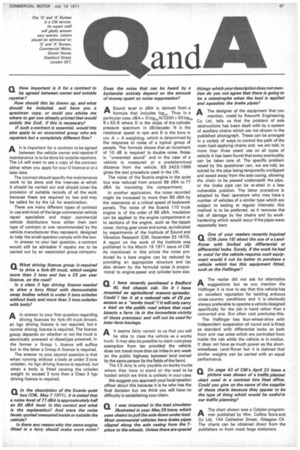Q I was interested in the load simulator
Page 49

If you've noticed an error in this article please click here to report it so we can fix it.
illustrated in your May 28 issue, which uses chains to pull the axle down under load. Most commercial vehicles have brake pipes clipped along the axle casing from the Tpiece to the wheels. Unless there are special fittings which your description does not mention do you not agree that there is going to be a catastrophe when the load is applied and squashes the brake pipes?
AThe designer of the equipment that you
mention, made by Raworth Engineering Co Ltd, tells us that the problem of axle obstructions has been dealt with by a system of auxiliary chains which are not shown in the published photograph. These can be arranged in a variety of ways to control the path of the main load-applying chains and, we are told, in more than three years' use on all types of vehicle it has been found that every eventuality can be taken care of. The specific problem raised by the questioner can, we are told, be solved by the pipe being temporarily unclipped and eased away from the axle casing, allowing the chain to be passed underneath the pipe, or the brake pipe can be re-sited in a less vulnerable position. The latter procedure is adopted by fleet operators who may have a number of vehicles of a similar type which are subject to testing at regular intervals; this method is to be preferred, as it removes the risk of damage by the chains and by workhardening which would occur if the pipes were repeatedly bent.




























































































